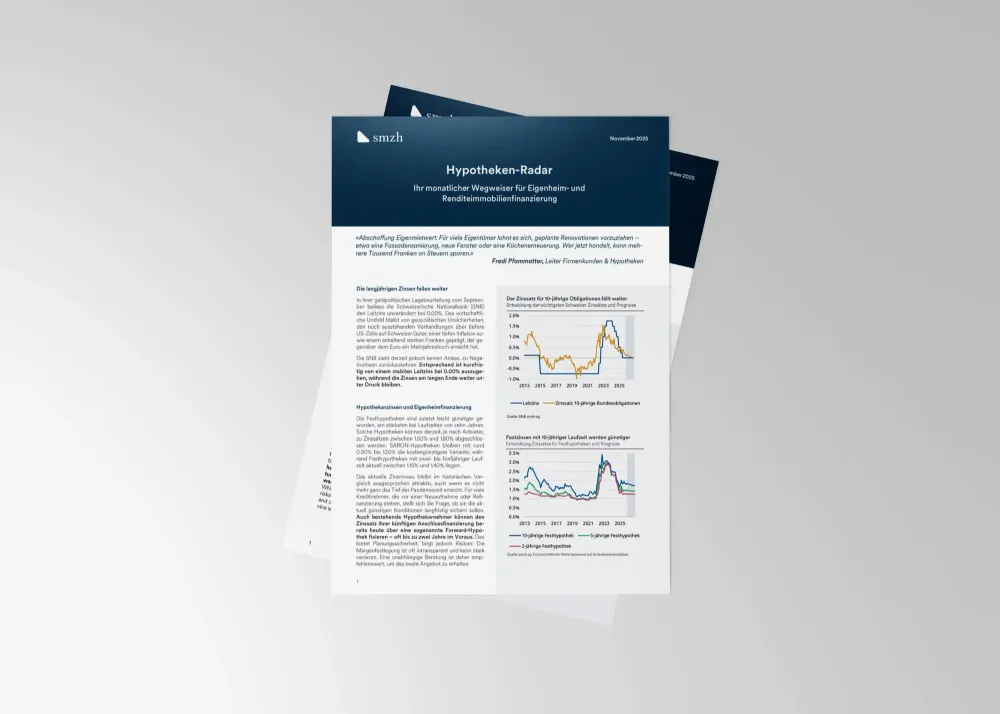In Switzerland, in addition to banks, insurance companies and pension funds also act as mortgage lenders. These alternative providers become particularly active in periods of low interest rates, as mortgages represent an attractive source of income for them, especially compared to low-yielding bonds.
However, the situation changes when interest rates rise: As rates increase, mortgages become less attractive for insurance companies and pension funds, as they can shift to alternative investments such as bonds. In periods of high interest rates, this often leads to reduced interest in the mortgage business and a decreased availability of mortgage offers from these providers.


When interest rates are low, mortgages offer insurers and pension funds a better return than bonds. This increases these providers' appetite for mortgage lending and often results in very attractive interest rates.
When interest rates rise, mortgage lending becomes less attractive for these providers, as alternatives such as bonds offer higher returns again. This can lead to a more limited offering.
Insurers and pension funds often focus on fixed-rate mortgages with long maturities. Such mortgages provide stability, but are less flexible, particularly in the event of early redemption.

Our latest Outlook Real Estate Market provides an overview of recent developments, opportunities, and trends – an in-depth analysis from our experts.

Stay one step ahead at all times: Our Mortgage Radar provides details about developments and trends on the Swiss mortgage market – right from the desk of our experts.
Monthly updates on real estate and mortgages. Subscribe now and identify opportunities early.

Our experts help you understand market developments and find the best options for your mortgage:
Together let's find the mortgage solution that best meets your needs.

We handle questions such as those shown on the right on a daily basis. You don't need to deal with them by yourself – our 360° Check-Up is free of charge and non-binding.
When interest rates are low, bond yields are also low. During such phases, mortgages offer insurers and pension funds an attractive alternative with better returns.
In phases of high interest rates, these providers tend to scale back their mortgage offering, as they shift their focus to more lucrative investments such as bonds.
Pension funds are not profit-oriented and can therefore offer very low interest rates, particularly when the interest-rate level is low anyway.
Banks are a reliable provider of mortgages even when interest rates are high, while insurers and pension funds often scale back their offering.